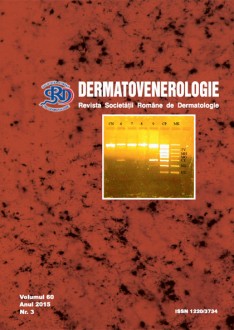Malignant haematological diseases comprise a series of heterogenous pathological conditions that consist in the neoplastic proliferation of the bone marrow and lymphatic system cells. Every year, about 250.000 persons are diagnosed with leukemia all over the world, representing 2.5% of cancer cases.
Skin cancers represent about 20% of the new cases of malignant neoplasias. The incidence of skin cancer in Romania is about 10 in 100,000 inhabitants.
Clinical case I. A 77-year old patient, known with non- Hodgkin’s lymphoma (NHL) stage 4 B since 2008, is admitted to hospital for two tumor formations at face level.
The result of the HP examination was a microscopic structure of mixt carcinoma and of seborrheic keratosis hyperkeratotic type. The patient also presented multiple eritemato-violaceous papules covered by intensely pruriginous haematic scalls in the lower limbs.
Clinical case II. A 73-year old female patient, known with myelodysplastic myeloproliferative, unclassifiable neoplasm since 2013, is hospitalized for a tumor formation situated in the right eye angle. The result of the HP examination was a microscopic structure of adenoid basal cell carcinoma.
The patients with blood diseases are much more susceptible to develop secondary malignant tumors, skin cancer being the most frequent one. This fact shows a high severity in the patients with blood diseases and it is associated to higher rates of relapse, a high risk for regional metastases and even death.
The various therapeutical methods used for the treatment of malignant blood diseases may continue to exacerbate immunodepression through the immune system depletion, thus favouring the emergence of a second neoplasia (skin cancer).


